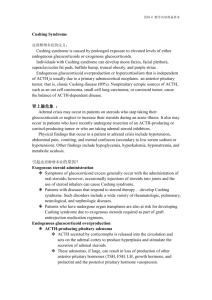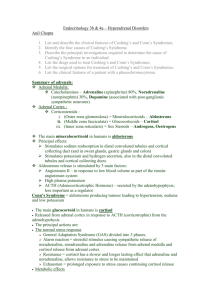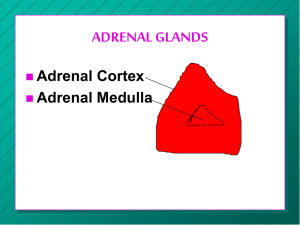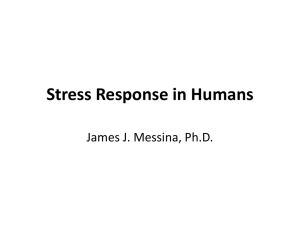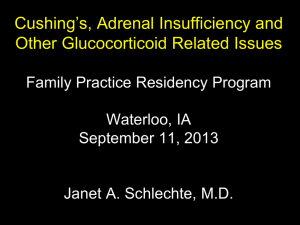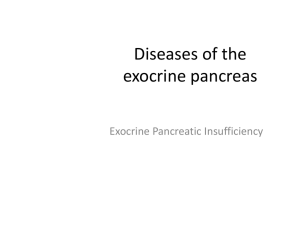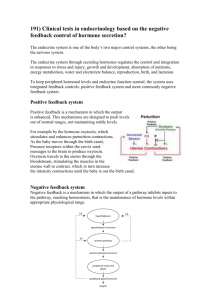Cushing`s syndrome
advertisement
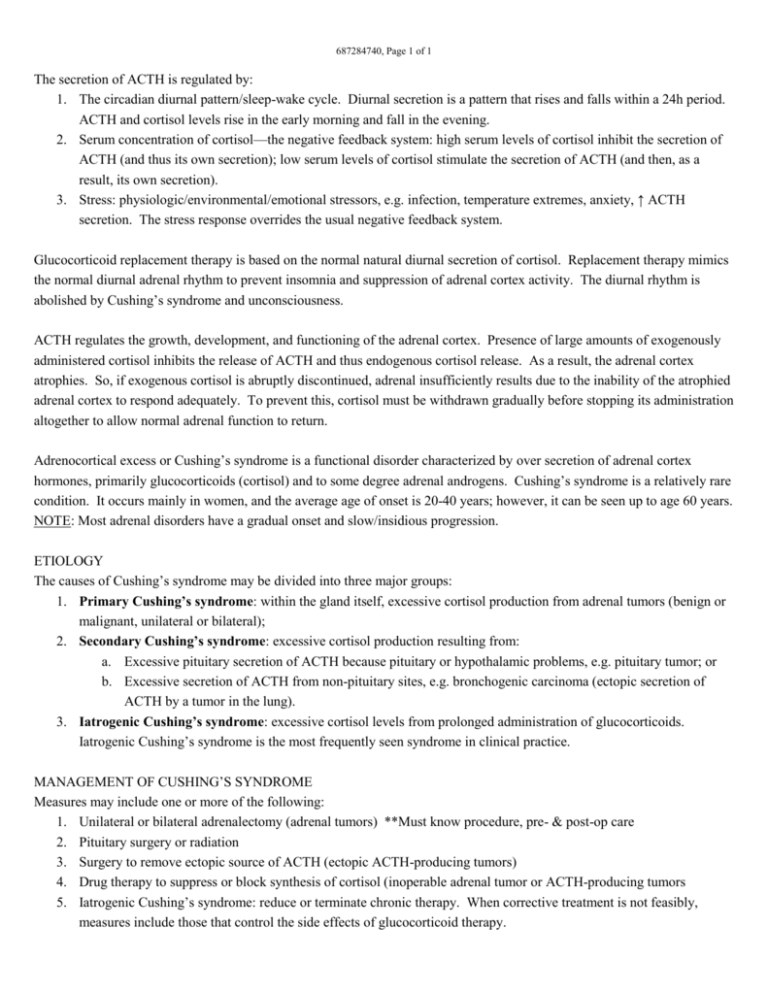
687284740, Page 1 of 1 The secretion of ACTH is regulated by: 1. The circadian diurnal pattern/sleep-wake cycle. Diurnal secretion is a pattern that rises and falls within a 24h period. ACTH and cortisol levels rise in the early morning and fall in the evening. 2. Serum concentration of cortisol—the negative feedback system: high serum levels of cortisol inhibit the secretion of ACTH (and thus its own secretion); low serum levels of cortisol stimulate the secretion of ACTH (and then, as a result, its own secretion). 3. Stress: physiologic/environmental/emotional stressors, e.g. infection, temperature extremes, anxiety, ↑ ACTH secretion. The stress response overrides the usual negative feedback system. Glucocorticoid replacement therapy is based on the normal natural diurnal secretion of cortisol. Replacement therapy mimics the normal diurnal adrenal rhythm to prevent insomnia and suppression of adrenal cortex activity. The diurnal rhythm is abolished by Cushing’s syndrome and unconsciousness. ACTH regulates the growth, development, and functioning of the adrenal cortex. Presence of large amounts of exogenously administered cortisol inhibits the release of ACTH and thus endogenous cortisol release. As a result, the adrenal cortex atrophies. So, if exogenous cortisol is abruptly discontinued, adrenal insufficiently results due to the inability of the atrophied adrenal cortex to respond adequately. To prevent this, cortisol must be withdrawn gradually before stopping its administration altogether to allow normal adrenal function to return. Adrenocortical excess or Cushing’s syndrome is a functional disorder characterized by over secretion of adrenal cortex hormones, primarily glucocorticoids (cortisol) and to some degree adrenal androgens. Cushing’s syndrome is a relatively rare condition. It occurs mainly in women, and the average age of onset is 20-40 years; however, it can be seen up to age 60 years. NOTE: Most adrenal disorders have a gradual onset and slow/insidious progression. ETIOLOGY The causes of Cushing’s syndrome may be divided into three major groups: 1. Primary Cushing’s syndrome: within the gland itself, excessive cortisol production from adrenal tumors (benign or malignant, unilateral or bilateral); 2. Secondary Cushing’s syndrome: excessive cortisol production resulting from: a. Excessive pituitary secretion of ACTH because pituitary or hypothalamic problems, e.g. pituitary tumor; or b. Excessive secretion of ACTH from non-pituitary sites, e.g. bronchogenic carcinoma (ectopic secretion of ACTH by a tumor in the lung). 3. Iatrogenic Cushing’s syndrome: excessive cortisol levels from prolonged administration of glucocorticoids. Iatrogenic Cushing’s syndrome is the most frequently seen syndrome in clinical practice. MANAGEMENT OF CUSHING’S SYNDROME Measures may include one or more of the following: 1. Unilateral or bilateral adrenalectomy (adrenal tumors) **Must know procedure, pre- & post-op care 2. Pituitary surgery or radiation 3. Surgery to remove ectopic source of ACTH (ectopic ACTH-producing tumors) 4. Drug therapy to suppress or block synthesis of cortisol (inoperable adrenal tumor or ACTH-producing tumors 5. Iatrogenic Cushing’s syndrome: reduce or terminate chronic therapy. When corrective treatment is not feasibly, measures include those that control the side effects of glucocorticoid therapy.


